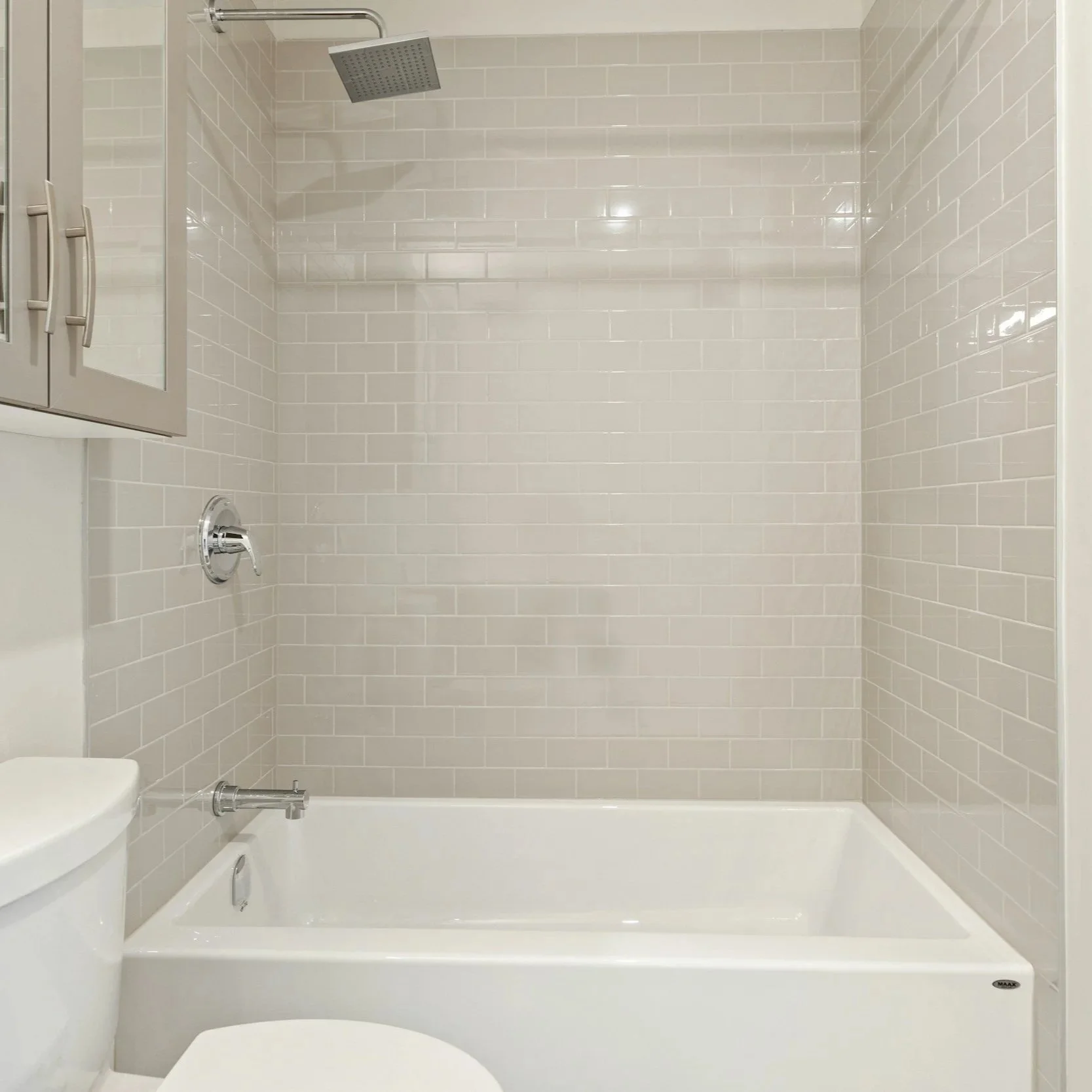What Causes Low Water Pressure In Showers And Tubs
Water pressure issues aren’t just about comfort—they point to deeper inefficiencies in the plumbing.
Low water pressure has a special way of ruining a good shower. One minute, it’s warm and refreshing. Next, it feels like being politely misted with disappointment. Whether it’s a slow start, a weak rinse, or an all-out trickle, something behind the walls isn’t pulling its weight. While the problem might show up in the bathroom, the cause can hide anywhere along the plumbing system.
Water pressure issues aren’t just about comfort—they point to deeper inefficiencies in the plumbing. Fixing them restores more than a good rinse. It brings back consistency, cuts down on wasted water, and makes the entire system function the way it should.
Clogged Showerheads And Tub Spouts
Mineral buildup plays rough with bathroom fixtures. Hard water deposits collect inside showerheads and aerators, narrowing the opening and reducing flow. The result? Water that barely sprays, no matter how high the handle is turned. Even newer fixtures can clog up quickly in homes with mineral-rich water.
Tub spouts face a similar battle, especially when they include a diverter that sends water up to the shower. A stuck or leaking diverter wastes pressure before it ever reaches the showerhead. Cleaning or replacing these parts can often bring immediate relief and restore full water flow.
Worn-Out Or Misadjusted Pressure Regulators
Some homes are equipped with a pressure regulator that manages the overall water pressure coming in from the main line. When this device starts to wear out or fall out of calibration, the entire system suffers. Showers and tubs often show the first signs because they rely on a steady, high flow to perform well.
If water pressure feels weak across the whole house—not just the bathroom—the regulator may be the culprit. Professional plumbers can test it, make adjustments, or replace it with a newer model designed to keep water moving smoothly from morning till night.
Hidden Leaks That Drain The Flow
Not all leaks announce themselves with puddles or water stains. Some happen inside walls or beneath floors, quietly drawing water away from its intended destination. Even small leaks can reduce pressure if they affect the main supply line or a specific branch feeding the bathroom.
When a leak pulls water off-course, less makes it to the shower or tub. That lower volume feels like a drop in pressure, even though the supply hasn’t changed. Leak detection and repair improve performance, stop damage before it spreads, and help conserve water that would otherwise vanish into the framing.
Old Pipes That Can’t Keep Up
Aging pipes don’t handle modern demand very well. Galvanized steel, a popular material in older homes, tends to corrode from the inside out. As that corrosion builds up, the opening narrows and restricts flow. Even if the water pressure is technically fine at the source, it becomes choked along the way.
Copper and plastic pipes last longer, but they aren’t immune to wear. Over time, joints can weaken, and buildup can form at bends and valves. Replacing outdated pipes or sections of the plumbing system makes a noticeable difference in flow, especially in showers and tubs that rely on high volume.
Valve Issues Behind The Wall
The shower valve is the traffic controller for hot and cold water. If it’s malfunctioning, clogged, or partially closed, pressure drops off fast. Old or damaged cartridges, stuck balancing spools, or mineral buildup inside the valve can disrupt the blend of temperature and flow.
When the tub and shower pressure changes suddenly or behaves inconsistently, the valve often needs attention. Sometimes a deep clean helps. Other times, replacement is the better route. Either way, reaching the root of the problem makes daily use much more pleasant—and predictable.
Sediment In Water Heaters
Showers rely heavily on the water heater, and a tank full of sediment makes it hard to deliver steady pressure. As minerals settle to the bottom of the tank, they take up space, reduce heat transfer, and block flow at the outlet.
Low hot water pressure in the shower is often tied to sediment buildup, especially in areas with hard water. Flushing the tank, inspecting the dip tube, or installing a filtration system can prevent sediment from cutting into comfort and causing more expensive issues down the line.
Municipal Supply Problems
Sometimes, the problem isn’t in the house at all. Local supply systems occasionally deal with pressure fluctuations, line maintenance, or population growth that stretches the limits of older infrastructure. Temporary dips in water pressure can affect entire neighborhoods, especially during peak usage times.
Even so, pressure that feels low for more than a few days should be checked by a professional. If the home is fine and the supply line is stable, the plumbing system should be able to deliver a strong, steady flow. If it doesn’t, there’s likely something internal that needs attention.
A Better Shower Starts With A Strong System
Water pressure might seem like a small detail, but it sets the tone for the whole bathroom experience. Low pressure doesn’t just slow things down—it signals a system that’s not running at its best. Whether the fix is a new valve, a cleaned fixture, or a professional pipe repair, the difference is immediate.
Garbage disposal installation and repair might dominate the kitchen conversation, but in the bathroom, water pressure is king. When it’s right, everything works better. Showers refresh. Tubs fill faster. And mornings move along without surprise drizzles or soap that refuses to rinse. A little attention goes a long way—and every drop starts counting again.

